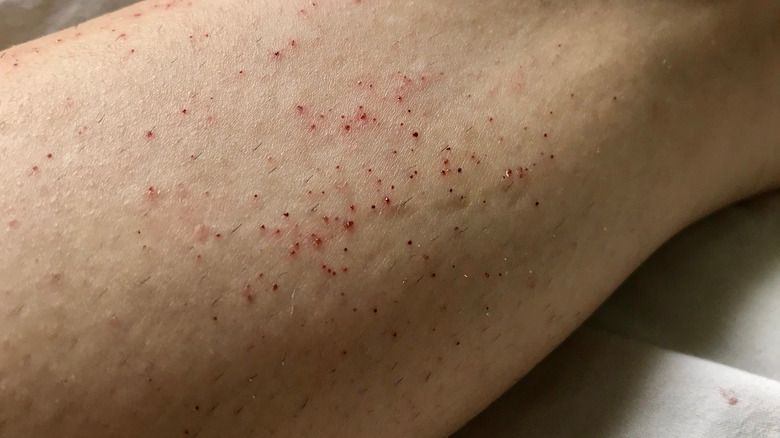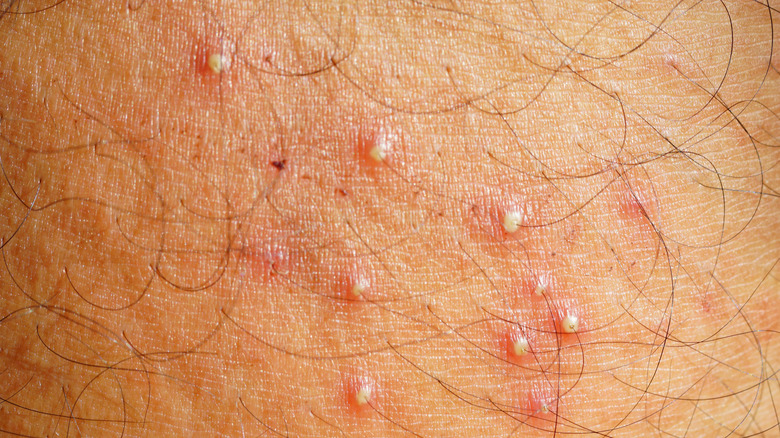Razor Burn Versus Folliculitis: What's The Difference?
The skin on our legs can easily be neglected. It's just too simple to throw on a pair of jeans or pants to cover up dry legs in the winter. However, you shouldn't ignore unusual changes to your skin. You may be examining the skin on your thigh one day, only to notice a strange red rash. It could be razor burn, but it could also be folliculitis. Here's how to tell the difference.
Though similar in appearance, razor burn is admittedly less cause for concern. Furthermore, it can be completely avoidable if you use the right products to protect your skin. "If you don't use a good product with emollients and occlusives to protect and moisturize the skin, you can end up with abrasions and irritation — this is razor burn," Dr. Hadley King, a board-certified dermatologist, told Byrdie.
Razor burn may cause your skin to itch, and give you unsightly red bumps all over the irritated area on your skin. However, there is another skin condition that can give your almost identical symptoms: folliculitis.
Folliculitis can leave permanent marks on the skin if left untreated
According to the Mayo Clinic, folliculitis is a skin condition that occurs when the hair follicles on your skin become inflamed. The end result is itchy skin and red bumps. Sometimes, the bumps look like whiteheads. Folliculitis is non-life-threatening, but if it goes untreated, the irritated area can spread. This can result in permanent sores and hair loss.
Medical News Today states that folliculitis is a bacterial infection that can develop from shaving, wearing tight clothing, ingrown hairs, wearing clothing that rubs on the skin, and injuries to the skin. If you are unsure of whether the newly discovered red bumps on your legs are razor burn or folliculitis, you may want to consider making an appointment with your doctor. This is especially necessary if the bumps spread or evolve into sores. Your doctor can make a diagnosis with a physical examination and take a swab of the infected area.
As previously stated, it's easy to ignore the skin on your legs. That being said, if you discover some red bumps or what looks to be a rash, keep an eye on it to make sure it doesn't grow or get worse.


